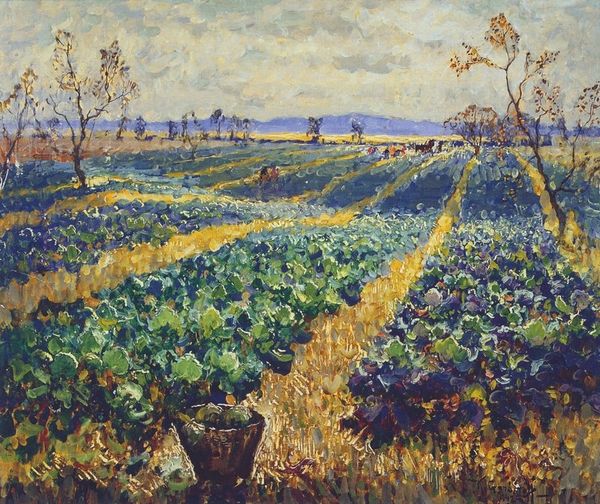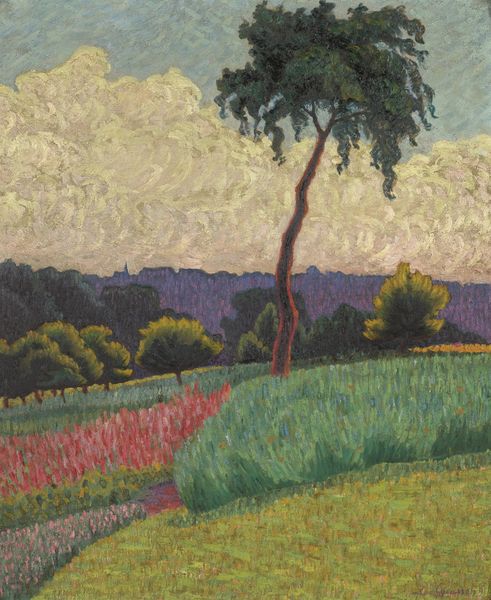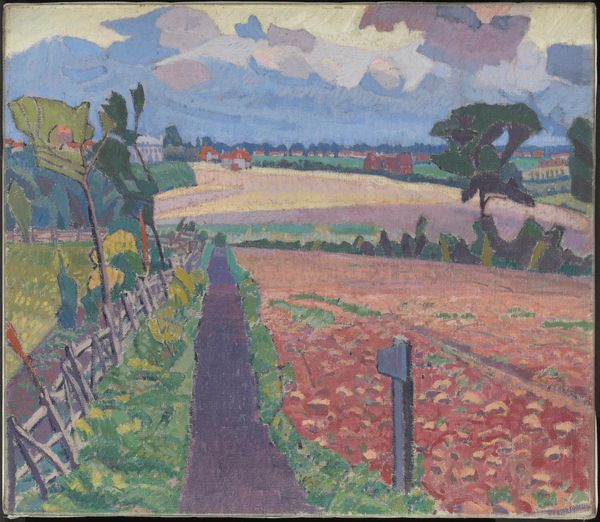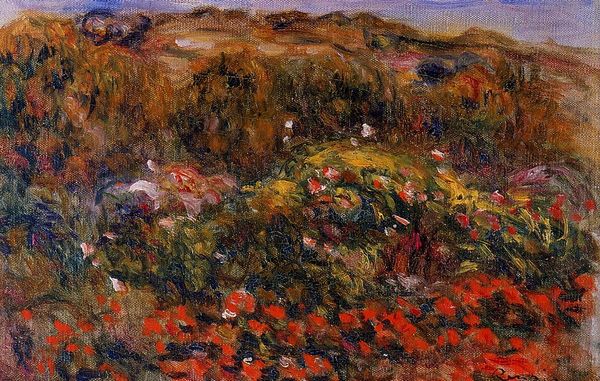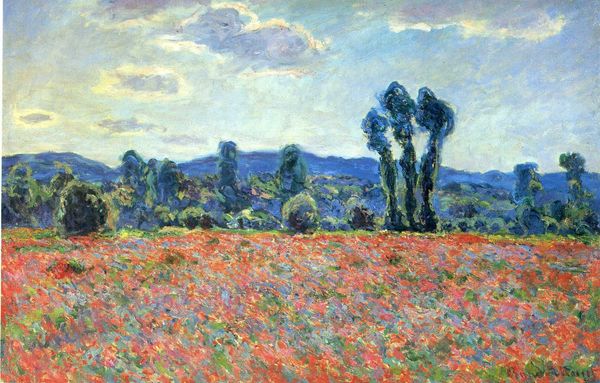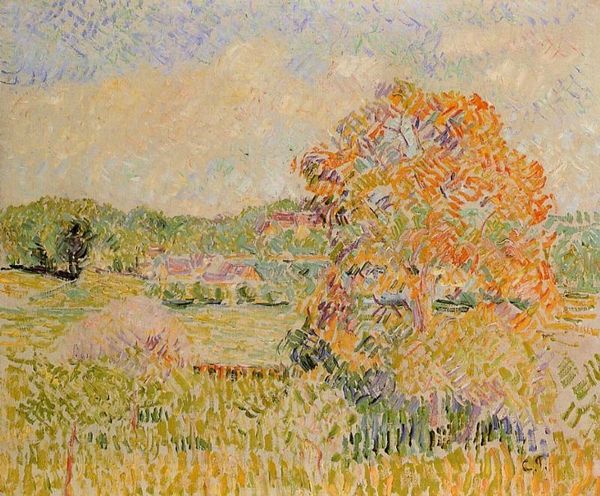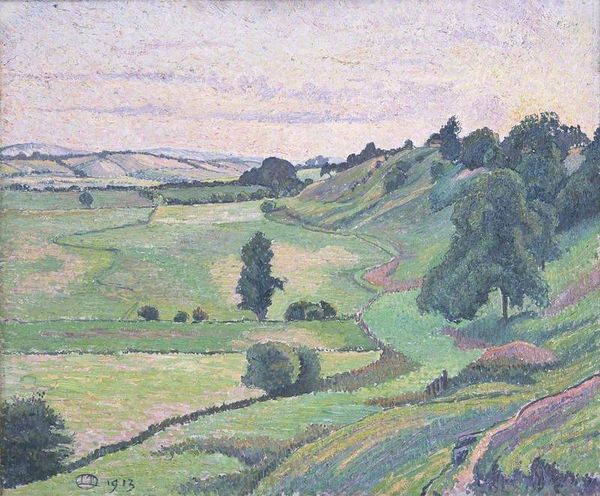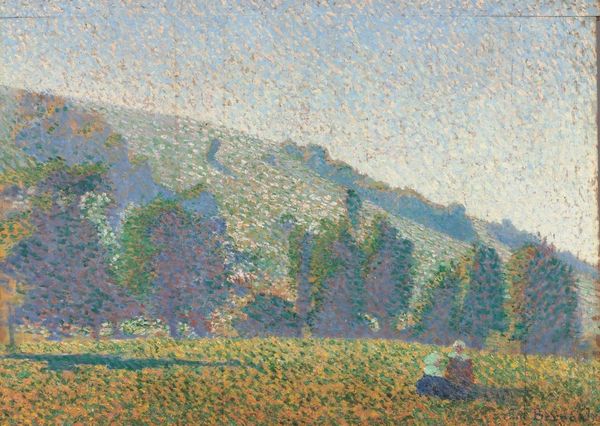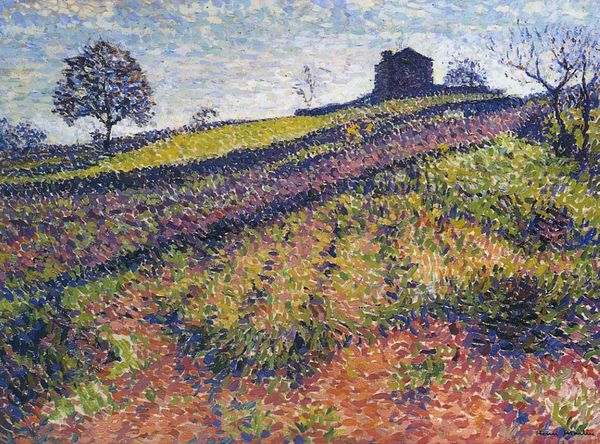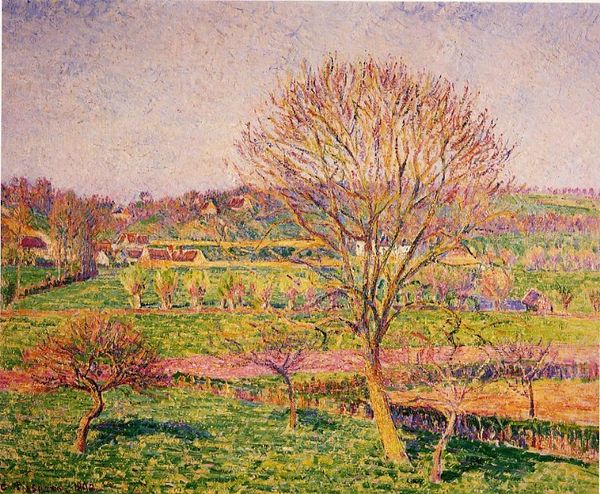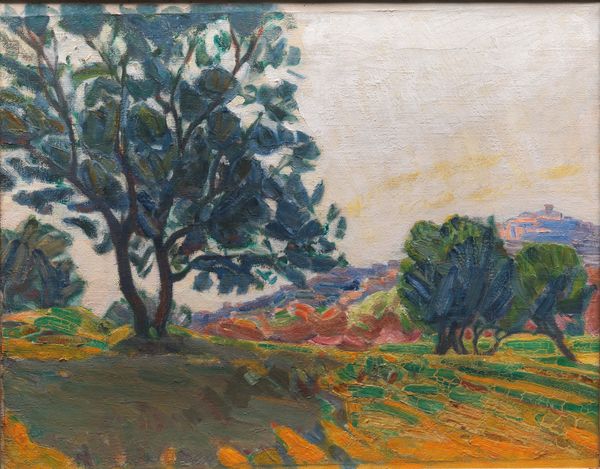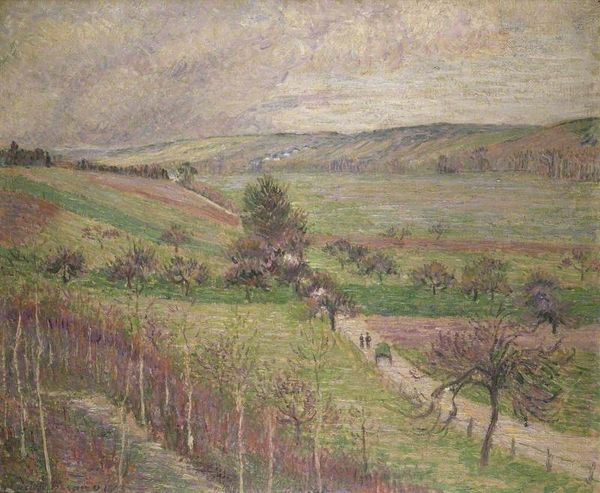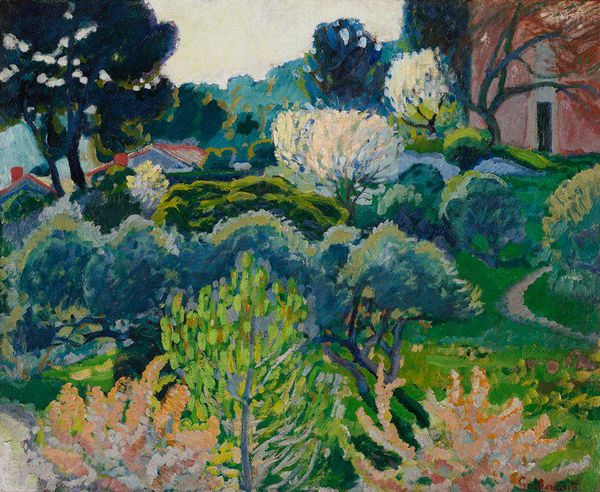
Dimensions: 32.5 x 41 cm
Copyright: Public domain
Editor: We’re looking at “The Vines in Saint Clair” by Théo van Rysselberghe, painted in 1912. It’s an oil painting, and it just bursts with color. The vineyard practically vibrates. What stands out to you about this piece? Curator: The intense colouration, as you pointed out, practically screams off the canvas. It immediately situates this work within a historical context – the Fauvist movement and its break from traditional representational art. But, even further, the pointillist technique van Rysselberghe employs asks us to consider class dynamics: who had the leisure to observe light and color with such detail and deliberate brushstrokes? Who would ultimately enjoy this image? Editor: That's a really interesting point. I hadn’t considered it in terms of class. So, are you saying that the very act of creating this kind of art was a statement? Curator: Precisely. Consider the historical context of early 20th-century Europe – growing social unrest and inequality. The Impressionists and Post-Impressionists were consciously moving away from academic painting and embracing individual expression. This painting, with its intense colours, breaks from tradition but subtly engages with those unfolding debates of representation and labour, even if it doesn't seem evident on the surface. Do you see it differently now? Editor: I do! It’s not just a pretty landscape. Knowing the context makes it a lot more compelling, almost rebellious. It’s like, art for art’s sake, but also… a little dig at the establishment. Curator: Exactly. It holds tension; art isn’t created in a bubble. Editor: This has opened my eyes to a new way of analysing art, appreciating the layers beyond just the visual. Thanks! Curator: And thank you. Every work is an artifact of its time, a node in a social network of creators and audiences, each influencing the other.
Comments
No comments
Be the first to comment and join the conversation on the ultimate creative platform.
